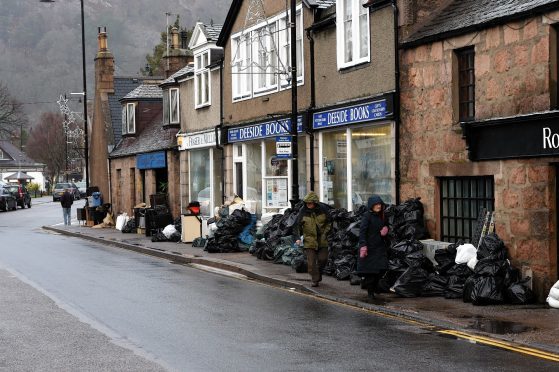The devastating floods which struck Deeside at the start of 2016 could have been the worst to hit the region in about 400 years.
The Scottish Environment Protection Agency said the deluge brought on by Storm Frank was almost certainly “the worst in living memory”.
It has also confirmed that the River Dee may have risen to a higher level than it did during the Muckle Spate of 1829 – regarded as the worst flood event in modern Scottish history.
Sepa hydrologist Claire Wheeler said the organisation was yet to confirm if river water levels were higher than during the 19th-century floods, but added that sections of the Dee had come very close.
She confirmed the river was higher than during the deluge of 1937 – which also caused the Dee to burst its banks in Ballater.
Other severe floods hit the Dee Valley in 1768 and 1642, and Sepa is investigating if these were on the same scale as the New Year deluge.
Mild winter weather, combined with melting snow and persistent rainfall, led to the watercourse overflowing on December 30 – with Ballater bearing the brunt of the floods.
In the weeks that followed, with heavy rainfall continuing, the rivers Don, Ury and Ythan also overflowed, forcing people in Kintore, Inverurie, Port Elphinstone and Kemnay to leave their homes abruptly.
A total of 307 homes and 60 businesses in Ballater alone were hit by the floods.
Ms Wheeler confirmed that first-hand accounts of the Muckle Spate were being used in their research.
She said: “It was a very intensive event accompanied by a fast rise in temperature. It was certainly the biggest flood in living memory.
“We still think at the moment that the 1829 flood was greater than this one, but these observations vary across the catchments. That is one of the things we are investigating.
“It had happened before, but not for a long time and this was a very severe event.
“This ki
“We can’t assess what the best thing is to do going forward without a good understanding of what happened.”
Torrents tore through Deeside and Speyside off the back of heavy rain fall during the Muckle Spate of August 1829, regarded as one of the most catastrophic floods in Scottish history.
The floods stretched from Inverness to Montrose, killing nine and wrecking small communities and farmland – with the Dee said to have risen to between 15ft and 27ft in places.
